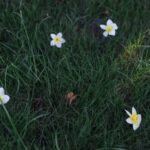Are you tired of the same old garden designs and looking for fresh ideas for overlooked gardens? From maximizing vertical space to embracing native plants, there are countless ways to transform your outdoor space into a breathtaking oasis.
In this article, we’ll explore creative tips and tricks for creating stunning gardens in areas that are often overlooked. Whether you have a small yard, limited space, or forgotten corners, we’ve got you covered with innovative ideas that will bring new life to your garden.
One of the most exciting aspects of gardening is the opportunity to think outside the box and get creative with your plantings. By utilizing vertical space and embracing native plants, you can unlock the full potential of your garden and create a unique and captivating landscape. We’ll share practical advice on making the most of every inch of your outdoor space, so you can enjoy a beautiful garden no matter how small or unconventional it may be.
In addition to maximizing growing space and highlighting local flora, we’ll also delve into forgotten corners and low-maintenance options such as wildflowers. You’ll discover how even the most neglected areas can be transformed into lush green spaces with just a little bit of attention and creativity.
With our tips for incorporating edible landscaping and container gardening, you’ll be well on your way to creating a garden that is both beautiful and functional. Get ready to be inspired as we explore the beauty of overlooked gardens.
Utilizing Vertical Space
One of the most innovative ideas for overlooked gardens is utilizing vertical space in creative ways to maximize growing space. Vertical gardening has become increasingly popular, especially for urban dwellers or those with limited outdoor space. By growing plants upwards rather than outwards, gardeners can make the most of their available area and create a stunning green oasis.
There are numerous creative ways to implement vertical gardening in your overlooked garden. One popular method is installing trellises or wall-mounted planters to support climbing plants such as cucumbers, tomatoes, or ornamental vines.
Another option is to construct vertical plant towers or hanging gardens using repurposed materials such as pallets, gutters, or PVC pipes. These structures not only add visual interest to your garden but also allow you to grow a wide variety of plants without taking up precious ground space.
In addition to traditional methods of vertical gardening, imaginative approaches like living walls or green roofs can transform bare walls and rooftops into lush, vibrant gardens. These green installations not only beautify your surroundings but also provide environmental benefits such as improved air quality and insulation. Whether you’re working with a small balcony or an expansive backyard, incorporating vertical gardening techniques into your overlooked garden can result in a thriving and visually striking landscape.
Embracing Native Plants
When it comes to creating a beautiful and sustainable garden, one of the best ideas for overlooked gardens is to embrace native plants. Native plants are those that naturally occur in a particular region and have evolved to thrive in the local climate, soil, and environmental conditions. By incorporating these plants into your garden, you can highlight the unique beauty of your local flora while also enjoying numerous benefits.
One of the key advantages of using native plants in your garden is their low maintenance requirements. Since they are already adapted to the local conditions, native plants typically require less water, fertilizer, and pest control compared to non-native species. This makes them an ideal choice for creating a more eco-friendly and sustainable garden that requires less ongoing care.
In addition to their practical benefits, native plants also play a crucial role in supporting local ecosystems. These plants provide food, shelter, and habitat for native wildlife such as birds, pollinators, and beneficial insects.
By cultivating a garden filled with native plants, you can help create a more diverse and resilient ecosystem in your own backyard. Whether you have a large yard or a small balcony space, embracing native plants is a wonderful way to showcase the natural beauty of your local area while promoting environmental sustainability.
| Advantages of Using Native Plants | Benefits for Local Ecosystems |
|---|---|
| Low maintenance requirements | Provides food and habitat for wildlife |
| Adapted to local climate and conditions | Promotes biodiversity and resilience |
| Eco-friendly and sustainable gardening | Supports pollinators and beneficial insects |
Small Garden, Big Impact
Creating a beautiful and thriving garden in a limited space may seem challenging, but with the right approach, it is certainly achievable. Whether you have a small backyard, a balcony, or even just a tiny courtyard, there are several creative ways to make the most of your space. By implementing clever design ideas and carefully selecting plants, you can create a stunning garden that leaves a big impact.
Intelligent Design
When working with a small garden, thoughtful design is key. Consider utilizing vertical space by installing trellises or hanging planters to maximize growing area. Additionally, creating different levels through the use of raised beds or terracing can add visual interest and allow for more planting space. Incorporating winding paths and curved borders can also create the illusion of more space while adding charm to your garden.
Strategic Plant Selection
Choosing the right plants is crucial when creating a small yet impactful garden. Opt for compact varieties of shrubs and trees, as well as dwarf or miniature versions of your favorite flowers. Embracing native plants not only supports local wildlife but can also thrive in your specific climate and soil conditions. Additionally, consider incorporating multi-functional plants such as herbs and edible flowers to not only beautify your garden but provide fresh culinary ingredients as well.
Maximizing Functionality
In a limited space, it’s important to make every element of your garden serve multiple purposes. For example, incorporating seating areas that double as storage or choosing plant containers that also act as decorative elements can help make the most out of your available space. Don’t forget to also add some lighting elements so you can enjoy your stunning garden day and night.
Forgotten Corners
Many gardens have those forgotten corners, areas that are often ignored and neglected. However, with a little creativity and effort, these overlooked spaces can be transformed into lush green areas that add beauty and interest to your garden. Whether it’s a small nook by the fence or a shady spot under a tree, there are plenty of ideas for overlooked gardens that can help you make the most of every inch of your outdoor space.
Repurposing Unusable Spaces
One way to transform forgotten corners into lush green spaces is by repurposing unusable areas. For example, if you have a narrow strip of land between your house and the neighbor’s fence that gets little sunlight, consider turning it into a shade garden with plants that thrive in low-light conditions. By thinking outside the box and finding ways to work with the unique characteristics of each area, you can maximize the potential of every corner of your garden.
Vertical Gardening
Another idea for overlooked gardens is to embrace vertical gardening in forgotten corners. Install trellises or wall-mounted planters on fences or walls to create a vertical garden in spaces where traditional ground-level gardening may not be practical. This not only adds visual interest to these areas but also maximizes growing space and allows you to showcase a variety of plant species in an otherwise unused space.
Creating Cozy Retreats
Instead of overlooking those forgotten corners, why not turn them into cozy retreats? With some comfortable seating, strategic planting, and thoughtful design elements such as decorative lighting or wind chimes, you can transform neglected areas into inviting spots where you can relax and enjoy the beauty of your garden from a new perspective.
By incorporating these ideas for overlooked gardens into your outdoor space, you can breathe new life into forgotten corners and create lush green spaces that enhance the overall beauty and functionality of your garden.
The Beauty of Wildflowers
Wildflowers are a beautiful and low-maintenance addition to any garden, making them a perfect choice for overlooked or untended spaces. These natural, wild blooms can add a pop of color and texture while requiring minimal care and attention. The key to incorporating wildflowers into your garden is to embrace their effortless beauty and let them thrive in their natural state.
One way to incorporate wildflowers into your garden is by creating a designated wildflower area. Choose a spot in your garden that receives plenty of sunlight and has well-drained soil, scatter the wildflower seeds, lightly rake them into the soil, and water thoroughly. Over time, these seeds will sprout, resulting in a vibrant display of native blooms.
Another idea for incorporating wildflowers into your garden is by mixing them with your existing flower beds. By interspersing native blooms with traditional garden flowers, you can create a dynamic and diverse display while attracting local pollinators and wildlife. This will not only add visual interest to your garden but also contribute to the local ecosystem.
Furthermore, consider the use of wildflower meadows in larger or more neglected areas of your yard or property. These expansive fields of native flowers can provide habitat for birds, bees, butterflies, and other beneficial insects. Additionally, they require little maintenance once established and can offer a stunning display throughout the growing season.
| Wildflower Gardening Tip | Benefits |
|---|---|
| Create a dedicated wildflower area | Easily incorporated into neglected spaces |
| Mix with existing flower beds | Attracts local pollinators and adds visual interest |
| Consider creating wildflower meadows | Provides habitat for wildlife and requires little maintenance |
Creative Container Gardening
Gardening in containers provides a wonderful opportunity to showcase your creativity and add visual interest to any space. Here are some creative ideas for overlooked gardens to inspire you:
- Upcycled containers: Look around your home for items that can be repurposed as plant containers, such as old tires, rain boots, or vintage teapots. Get creative and think outside the box – or should we say, outside the pot.
- Hanging gardens: Utilize vertical space by creating a hanging garden with macrame plant hangers, repurposed pallets, or wall-mounted planters. This is an excellent way to add greenery and charm to small outdoor areas or even inside your home.
- Fairy gardens: Let your imagination run wild by creating miniature landscapes within a container. Use tiny figurines, moss, and small-scale plants to design an enchanting fairy garden that will captivate the hearts of visitors of all ages.
Experimenting with unique plant containers allows you to infuse personality into your garden while maximizing limited space. By thinking creatively, you can transform overlooked areas into flourishing oases of beauty and inspiration. Do not be afraid to try unconventional approaches when it comes to container gardening – the sky’s the limit.
Edible Landscaping
When it comes to gardening, many people often overlook the potential of creating a beautiful and functional space that also provides a bountiful harvest of edible plants. Edible landscaping is a wonderful way to not only create an aesthetically pleasing garden but also to produce your own fresh fruits, vegetables, and herbs. Here are some ideas for incorporating edible landscaping into your garden:
- Vertical gardening: Utilize trellises, arbors, or wall-mounted planters to grow climbing fruits and vegetables such as cucumbers, tomatoes, and peas.
- Interplanting: Incorporate herbs and vegetables among ornamental plants to create a visually appealing garden that also serves a practical purpose by providing fresh produce.
- Container gardening: Use creative containers such as colorful pots, hanging baskets, or repurposed items like old crates or tin cans to grow herbs, lettuce, peppers, and other edibles in small spaces.
Embracing edible landscaping not only adds beauty and functionality to your garden but also promotes sustainability and self-sufficiency. By growing your own food, you can reduce your reliance on store-bought produce while enjoying the satisfaction of harvesting homegrown ingredients for your meals.
Incorporating edible plants into your landscape design not only offers aesthetic appeal but also provides an opportunity to connect with nature through sustainable gardening practices. Whether you have a small balcony or an expansive backyard, there are countless ways to integrate edible plants into your outdoor space while creating a visually stunning landscape that serves a dual purpose of beauty and function.
Conclusion
When it comes to creating a beautiful garden, many people focus on the main lawn or visible areas, often overlooking forgotten corners of their outdoor space. These neglected spots, whether tucked away behind a shed or hidden by overgrown shrubbery, have the potential to become lush green spaces that add charm and character to your overall garden. With a little creativity and effort, these overlooked areas can be transformed into thriving pockets of nature.
One idea for overlooked gardens is to utilize forgotten corners as mini wildlife havens. By introducing birdhouses, feeders, and baths, you can attract various bird species to these secluded spots. Adding a variety of native plants will also support local wildlife and create a vibrant ecosystem within these areas. This not only brings joy through observing visiting wildlife but also contributes to the overall biodiversity of your garden.
Additionally, turning forgotten corners into small seating areas can provide charming and secluded spots for relaxation and contemplation within your garden. By adding comfortable seating and surrounding it with lush foliage and flowers, you can create a peaceful oasis for enjoying a cup of tea or escaping from the hustle and bustle of everyday life.
By recognizing the potential of these overlooked spaces, you can transform them into valuable and enchanting components of your garden. The possibilities are endless when it comes to unlocking the potential of forgotten corners in your outdoor space.
Additional Resources and Tips for Further Inspiration
In conclusion, there is endless potential for overlooked gardens to be transformed into stunning and vibrant spaces. By utilizing vertical space, embracing native plants, and being creative with container gardening, even the smallest of areas can become a lush and beautiful garden. Additionally, incorporating low-maintenance wildflowers and edible landscaping can add both beauty and functionality to any outdoor space.
It is important to remember that no corner should be forgotten when creating a garden, as even the most ignored areas have the potential to become green havens. With the right tips and resources, anyone can turn their overlooked garden into a flourishing paradise.
To find further inspiration for your gardening endeavors, consider seeking additional resources such as local gardening clubs or online forums. These sources can provide valuable advice from experienced gardeners and offer new ideas for overlooked gardens that you may not have considered before. Remember that with a little creativity and effort, any outdoor space has the potential to become a thriving oasis of natural beauty.
Frequently Asked Questions
How Do You Create Privacy in Your Yard Without a Fence?
One way to create privacy in your yard without a fence is by strategically planting trees, shrubs, and tall plants. Using garden trellises with climbing vines can also provide a natural privacy barrier.
How Do You Landscape a Secret Garden?
To landscape a secret garden, focus on creating secluded nooks and hidden pathways. Use lush foliage, winding pathways, and secluded seating areas to create a sense of mystery and intimacy within the garden space.
How Do You Make a Beautiful Low Maintenance Garden?
Creating a beautiful low maintenance garden involves choosing hardy, easy-care plants that require minimal watering and pruning. Incorporating mulch and ground cover plants can help suppress weeds and reduce the need for maintenance. Additionally, using native plants that are well-suited to the local climate can help minimize the need for extra care.

Welcome to my gardening blog! I am passionate about plants and enjoy sharing my knowledge and experiences with others. In this blog, I will write about everything related to gardening, from tips on how to get started to updates on my own garden projects.





